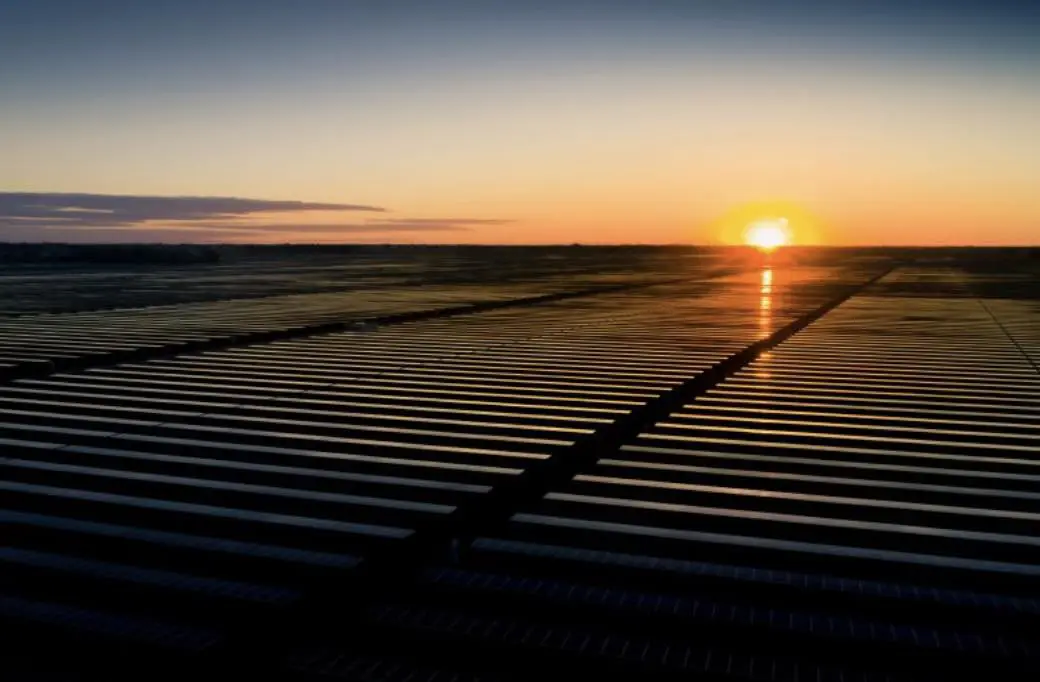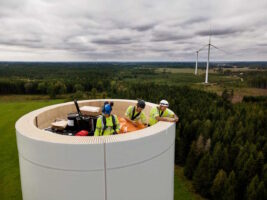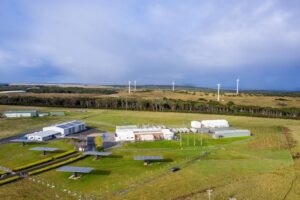The owner of the 133MW Finley Solar Farm in NSW has revealed it has won a contract from the Australian Energy Market Operator to use the big spinning machine known as a synchronous condenser installed at its site to support stable operations of the grid.
News of the contract was revealed in a LinkedIn post from the solar farm owner, the now privately owned UK infrastructure investor John Laing, but sheds little light on the hidden agreements that feature in this obscure part of grid operations.
Finley was one of a number of large scale solar farms that were required to invest tens of millions of dollars in synchronous condensers – big spinning machines that provide “system strength” without burning fuels.
The others included Edify Energy’s Darlington solar farm, which built two syncons at the same location as Finley, and Total Eren’s Kiamal solar farm in Victoria.
They did so to try and offset the risk of having their output heavily curtailed due to system strength issues, and were part of an ill-considered rule change known as “Do No Harm” that was eventually dumped because it was clearly having the opposite effect.
Transgrid, the transmission network operator in NSW, complained that the construction of syncons at random places around the grid would likely make it more challenging to maintain grid security.
The question then was focused on what to do with the syncons in place, and the rules were changed to end the chaos and encourage more holistic thinking to approach the issue of system strength in the grid as more wind and solar enters the market, and coal plants retire.
Enter AEMO, which as part of its solution to the problems in on one particularly weak part of the grid – the West Murray zone in northern Victoria and south-west NSW – sought to enter contracts with the syncons that had been built.
John Laing says its 60MVar synchronous condenser at Finley will supply voltage and current to the grid in the event of a technical fault.
In a statement on LinkedIn, Duncan Jewell, the managing director for Asset Management Asia Pacific at John Laing, said:
“This is another important milestone for Finley Solar Farm. We are proud to have successfully delivered the first synchronous condenser to be connected to the New South Wales transmission network and to be contributing to the stable operation of the grid.”
But it is not clear that Finley is the first. RenewEconomy understands that Edify’s two syncons – each sized at 40MVar with a combined output of 75MVar – are in use, but neither the company nor AEMO would confirm any contract. Transgrid could shed no light on the situation.
In an emailed statement, AEMO noted that it had implemented short term solutions to address the system strength shortfall in the Red Cliffs area and then sought expressions of interest for services to be provided from August 2022 until at least 2024-25.
“These system strength services include operation of the synchronous condenser at the Finley Solar Farm,” it said.
Are other syncons also involved and contracted? “We can confirm the Finley Solar Farm,” came the reply.
AEMO has also started a new review into the issue about system strength and how those essential grid services should be provided, and who should be responsible.
There is much to discuss, not just about the complex engineering aspects, but also about the appropriate regulatory and market signals.
There is also the question about the choice of technologies – are syncons, a near half century old technology – the best solution, or should the focus be on advanced battery inverters, also known as grid forming inverters, that are being trialled at different big batteries in Australia.
Some of the issues brought up in an AEMO paper focuses on how network providers should meet their new requirements to be responsible for providing an “efficient” level of system strength, rather than a bare minimum.
It may turn out that the considerations of the NSW government, which will need to address the issue as it creates the first of its at least five renewable energy zones, will become a pace-setter on the issues.
And there is concern is some quarters that syncons will be favoured over battery storage alternatives.
Which is not to say that syncons are not a valid solution.
South Australia’s ElectraNet has installed four large syncons in that state in a move that has effectively doubled the amount of wind and solar than can be generated at any one time.
It has also allowed the market operator to dial down the amount of gas generation required to minimum levels, and significantly reduced the number and cost of interventions, or directions, in the market.
That process has also been highly transparent, with ElectraNet declaring in detail the cost and assumed benefits of the syncons. That’s largely because the anticipated shortfall was spotted well in advance, and allowed for a full regulatory process to be implemented.










